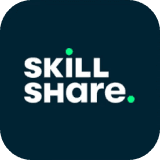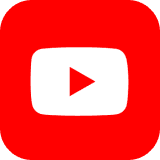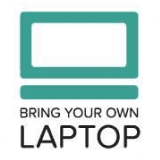Empowers users with custom meal plans and budgeting tools, while fostering a supportive community.
Timeline
August - October 2023 ( 12 weeks)
My Role
Google UX Design Certificate Solo Project
THE PROBLEM
There is a lack of accessible, high-quality design tutorial content for enthusiasts and professionals.
THE SOLUTION
Designvids provides a centralized platform for design tutorials, courses, and community support, empowering learners at all levels.
Centralized
Content is Design specific
No need to sift through
unrelated contentSearch filters provide
granularity
Structured
Tailored to User needs
All skill levels
All learning paces
Community
Connect with other
learnersProfessional connections
collaboration
RESEARCH
A design tutorial platform should cater to diverse skill levels, emphasizing inclusivity, community, and varied content.
I conducted primary and secondary research, competitive analysis, and User interviews.
I discovered a diverse audience with varying skill levels and interests, suggesting a need for content catering to both beginners and professionals.
Users interviewed highly valued a sense of community and interaction with peers and instructors, highlighting the importance of fostering an engaged learning environment.
ideation through crazy eights and How Might We’s helped me focus insights into actionable solutions.
“How might we create a design tutorial platform that caters to both beginners and professionals while fostering a supportive community?”
COMPETITIVE ANALYSIS + THE GAP
Most of the competition doesn’t focus solely in the design space and its community.
During my analysis of competitors, the main gap found is the lack of a centralized platform offering consistently high-quality, expert-led design tutorials with strong community engagement and comprehensive coverage for all skill levels.

Skillshare

Youtube

Udemy

BYOL
All interviewees voiced a need for mobile optimization and flexibility in accessing tutorials across different devices
The main takeaway from the interviews is that users value concise, practical tutorials with clear instructions and downloadable resources, but they often face challenges with seamless access across devices.
INTERVIEW QUESTIONS:
How do you typically search for design tutorials online? Can you walk me through your process or share any specific websites or platforms you visit?
What factors make a design tutorial valuable and engaging for you?
When accessing design tutorials on different devices (e.g., desktop, tablet, mobile), have you encountered any challenges or difficulties?
Are there any features you would like to see that aren’t available on the platforms you visit?
THE MAIN INSIGHT
Users value concise, practical tutorials with clear instructions and need them to be easily accessible.
Through affinity mapping, 3 main themes emerged highlighting insights pertaining to users’ needs
Themes
Insights
Actionable Steps
Accessibility and Flexible learning
Users search for tutorials across various platforms and value the flexibility to learn on different devices (desktop, tablet, mobile).
Ensuring tutorials are accessible and optimized for multiple devices is crucial.
Users appreciate the ability to learn at their own pace and revisit content as needed.
Quality of content
Users prefer concise, practical tutorials with clear instructions and real-world applications.
Tutorials should include downloadable resources, visuals, and exercises to enhance learning and application.
Structured learning paths and manageable sections help users progress efficiently
Community Engagement
Providing a sense of community and interaction with peers and instructors can enhance the learning experience and user satisfaction.
Engaging forums, discussion boards, or live chat options can significantly enhance the learning experience.
Peer feedback and collaborative projects provide additional learning opportunities and support.
THE CONTINUED EDUCATION PERSONA
THE DESIGN
Setbacks and new direction for testing
When it came time to test my design solution I struggled to find participants, as I had recently moved across country and no longer had a local network to recruit from. I reached out to my Discord community and ultimately ran moderated User tests over Discord utilizing screen sharing from participants and screen recording to refer back to later with my notes.
TESTING AND IMPROVEMENTS
3 Major improvements in my design
Based on feedback and insights gained from testing, I designed new features to accompany my original design over the span of 6 weeks with 3 major improvements:
Targeted search
Filter options added to search
for more granular control and
easier discoverability
Courses
Added course
functionalityDownloadable content
for offline useStructured learning
paths
Interactions
Forums
Course discussions
area for users to share
work, and get peer
feedback
FINAL SCREENS
The final product
Clickable Prototype
Style guide
Link to my full Figma work file here
CONCLUSION AND LESSONS LEARNED
What I'd do differently next time
I am grateful for my continued growth in UXD as I delve into more of these projects, and here are a few things I learned throughout the course of this project:
User-Centered Design. This project continued to instill in me the importance of engaging with users and understanding their needs
Iterative testing. Looking back, I would have liked to had the time to do a second round of user-testing after my design iterations based on the feedback from round one. This would have helped validate the changes. This leaves me wondering when a design is truly “done”?
Balancing aesthetics and functionality. I have a tendency to get hung up on the visuals more than the functionality. Striking the right balance between the two will be essential for me moving forward.
Thank you for reviewing my work! 😊
For work inquiries, or just to connect, email me at jcolceri@gmail.com












